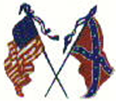


|
1837 |
The English engineer Isambard Kingdom Brunel builds The Great Western, the first of his ocean going vessels. He also builds numerous bridges and over l,000 miles of railway.
|
|
1838 |
In South Africa the Boer Voortrekkers crush the Zulus at the Battle of Blood River. Over the next five years they set up republics in Natal, Transvaal, and the Orange Free State.
In Britain, Chartism calls for universal suffrage, secret ballots and annual parliaments. Supporters include the historian Thomas Carlyle and the novelist Charles Kingsley.
To provide land for white settlers, Native Americans are moved to “Indian Territory” in the west. The Cherokee resist, but are forced on a journey known as the Trail of Tears.
The Anti-
The English artist Joseph Turner paints The Fighting Temeraire, the first in a series of vibrant works famed for their daring use of colour, free brushwork and intensity of light.
|
|
1839 |
The First
Opium War breaks out between
Britain and China, as does the First Anglo-
The Polish composer and pianist Frédéric Chopin writes his famous Piano Sonata No.2, and the Hungarian piano virtuoso Franz Liszt begins his highly successful tour of Europe.
The French painter Louis Daguerre and the English chemist Fox Talbot make public their photographic processes, both of which greatly reduce the required exposure time.
|
|
1840 |
By the Treaty of Waitangi the islands of New Zealand come under British control. Though made to protect the native population, it leads to the Maori Wars of the 1840s and 1860s.
Following Egypt’s conquest of Syria, completed in 1839, the Great Powers, anxious to save the Ottoman Empire, force Egypt’s leader, Muhammad Ali, to withdraw his troops.
|
|
1841 |
Following revolts in both Lower and Upper Canada in favour of democratic reform, the two provinces are united by the Union of Canada Act, with each given equal representation.
Murders in the Rue Morgue is published, one the many horror stories produced by the American writer Edgar Allan Poe. He was also an accomplished poet and literary critic.
|
|
1842 |
The poem The Pied Piper of Hamelin is published by the English poet Robert Browning. Later works include Home Thoughts from Abroad and The Ring and the Book.
By the Treaty of Nanking, ending the First Opium War, Britain gains the Island of Hong Kong. The territory is later extended onto the mainland in 1860 and 1898 (Vc).
|
|
1843 |
The Danish philosopher and theologian Soren Kierkegaard publishes his first major work Either/Or. He came to be seen as a precursor of the 20th century Existentialist Movement.
|
|
1844 |
The adventure novel The Three Musketeers is published by the French writer Alexandre Dumas. Other works include The Count of Monte Cristo and The Man in the Iron Mask.
By the Treaty of Tangier, Morocco recognises France’s claim to Algeria. It manages to retain its own independence until the international Algeciras Conference of 1906.
|
|
1845 |
In Ireland, an outbreak of potato blight begins the Great Famine, six years of extreme suffering. Nearly a million die, and a similar number emigrate, mostly to the United States.
The English explorer Sir John Franklin leads an expedition to discover the Northwest Passage. The two ships are sighted two months later, but then are never seen again.
The German composer Richard Wagner produces his romantic opera Tannhauser. His masterpiece, the musical drama The Ring of the Nibelung is staged in 1876 (Vb).
|
|
1846 |
By the Treaty of Oregon the United States settles its western border with Canada, but in the south war breaks out with Mexico. By it the U.S. gains California and New Mexico.
The English talented artist Edward Lear publishes his Book
of Nonsense and becomes famous for his zany, highly
amusing limericks and his delightful pen-
The French composer Hector Berlioz produces his Damnation of Faust. Like his contemporary the German Robert Schumann, much of his work has a literary content.
The British army officer Charles Sturt, having earlier discovered the
river system of south- |
|
1847 |
In the north of England Charlotte Bronte publishes Jane Eyre, her sister Emily publishes Wuthering Heights, and her sister Anne publishes Agnes Grey, all under pen names.
Chloroform is discovered by the Scottish obstetrician James Simpson, physician to Queen Victoria. Like ether, which it replaces, it makes possible more extensive operations.
After a long conflict, starting in 1830 (W4), France finally gains control of northern Algeria, but the eastern region is not subdued until 1857, and the Sahara areas not until 1900. |
|
1848 |
The Communist Manifesto, calling for the overthrow of the ruling classes, is published in London, the work of the German social philosophers Karl Marx and Friedrich Engels.
The Year of Revolutions sees rebellions against autocratic rule in many European states, including France, Italy, Hungary, Austria and Germany. The majority are quickly crushed.
Gold is discovered at Coloma in California and starts off a massive Gold Rush. Within a few years gold is also struck in parts of Australia, South Africa, Canada and New Zealand.
Three English artists, Rossetti,
Millais and Hunt, found the Pre-
Vanity Fair is published, the realistic novel of the English writer William Makepeace. Thackeray. By this and his later works he is seen by some as a rival to Charles Dickens. |
|
1849 |
The Italian national hero Giuseppe Garibaldi takes on the Austrians in Milan and the French in Rome. Eventually defeated, he escapes abroad but returns to the fight in 1854.
The Punjab is annexed by the British following the Second Sikh War. In India as a whole, mounting opposition to British rule eventually leads to the Indian Mutiny of 1857.
Excavation begins on the site of the ancient city of Nineveh, carried out by the English archaeologist Austen Layard. Four years earlier he unearthed the Assyrian city of Calah.
|
|
1850 |
The second law of thermodynamics is formulated by the physicist Rudolf Clausius. He later contributes to the theory of electrolysis and the kinetic theory of gases.
The English writer Charles Dickens writes David Copperfield, one of his most popular stories. His powerful social novels were well written, and full of memorable characters.
|
|
1851 |
The American novelist Herman Melville completes his major work Moby Dick. In its use of symbolism this sea drama is influenced by the American writer Nathaniel Hawthorne.
|
|
1852 |
In South Africa, the British recognise the independence of the Transvaal (and the Orange Free State in 1854), but retain Natal, and gain victory in the Cape Frontier (Kaffir) Wars. XXXXXXXXXXXXXXXXXXXXXXXXXXXXXXXXXXXXXXXXXXXXXXXXXXXXXXXXXXX Louis Napoleon, nephew of Napoleon Bonaparte, having been elected President in 1849, establishes the Second Empire in France and makes himself Emperor as Napoleon III.
A trade dispute sparks off the Second
Anglo-
|
|
1853 |
The Crimean War breaks out, the first major European conflict since the Napoleonic Wars. Russia occupies Moldavia and Wallachia, and destroys the Turkish fleet at Sinope.
The Italian composer Giuseppe Verdi produces two of his finest operas, Il Travatore and La Traviata. His later works include Aida and his masterpieces Otello and Falstaff.
The Scottish medical missionary and explorer David Livingstone begins his arduous crossing of Africa from west to east, discovering the mighty Victoria Falls en route.
|
|
1854 |
Britain and France enter the Crimean War. Allied with Turkey, they lay siege to Sevastopol and defeat Russian forces at the Battles of Alma River, Balaclava and Inkerman.
By the Treaty of Kanagawa the American naval officer Commodore Matthew Perry forces Japan to open some of its ports to international trade. Other countries quickly follow suit.
|
|
1855 |
In the Crimea, a French force eventually succeeds in capturing Sevastopol. At the same time the British government starts an enquiry into the bad management of the war.
Appalled by the lack of medical care available in the Crimea, the English nurse Florence Nightingale embarks upon a reform of British military hospitals and nursing generally.
The popular American poet Henry Wadsworth Longfellow publishes his best known work The Song of Hiawatha. His output also includes the famous poem Paul Revere’s Ride and The Wreck of the Hesperus.
The English writer Anthony Trollope begins his series of novels about life in the fictitious cathedral city of Barchester. He later writes a series on the aristocratic Palliser family.
At the Paris World Fair the controversial French artist Gustave Courbet stages his own “Pavilion of Realism”, a display of realistic work which includes his The Painter’s Studio. |
|
1856 |
The Treaty of Paris ends the Crimean War. By its terms the integrity and independence of Turkey is confirmed, and Russian influence is curbed in the Balkans and Black Sea areas.
The cost of steel production is much reduced with the invention of the Bessemer process, a modification in manufacture introduced by the English engineer Henry Bessemer.
|
|
1857 |
The Indian Mutiny breaks out, aimed at overthrowing British rule. The rebels take Delhi and Cawnpore and lay siege to Lucknow, but the mutiny is crushed within twelve months.
Jean François Millet, a leading member of the French Barbizon School of landscape painters, produces his famous The Gleaners, a realistic portrayal of peasant life.
The popular story Tom Brown’s School Days is written by the English barrister Thomas Hughes. It tells of life at Rugby at the time when Thomas Arnold was the headmaster.
The English explorers Richard Burton and John Speke set out to discover the source of the White Nile. Burton is forced to turn back, but Speke discovers Lake “Victoria” in 1858.
|
|
1858 |
The French chemist Louis Pasteur discovers that fermentation is caused by bacteria, and the German pathologist Rudolf Virchow applies the cell theory to explain disease.
The German-
|
|
1859 |
Work begins on the building of the Suez Canal to link the Mediterranean with the Red Sea. Supervised by the French diplomat Ferdinand de Lesseps, it is completed in 1869 (Vb).
In the War
of 1859 Sardinia-
The opera Faust, based on a play by Goethe, achieves lasting fame for its French composer Charles Gounod. He was also admired for the quality of his Church music and choral work.
Alfred Tennyson, one of England’s most gifted poets, begins work on The Idylls of the King, a series of poems based on the Arthurian legends. It is not completed until 1885.
On Liberty, a defence of individual freedom, is published by the English philosopher and economist John Stuart Mill. He was also a strong supporter of women’s suffrage.
Moldavia and Wallachia agree to form the Kingdom of Romania, but independence from
the Turks is not gained in full until the end of the Russo-
|
|
1860 |
The occupation of Beijing and the burning of the summer palace by the British and French bring an end to the Opium Wars. By then, Western nations had gained a foothold in China.
The English realist novelist George Eliot (pen name of Mary Ann Evans) writes The Mill on the Floss. Her other major works include Adam Bede, Silas Marner and Middlemarch.
In the struggle for Italian unification, the Italian patriot Giuseppe Garibaldi conquers Sicily and Naples in the south, and then joins up with Piedmontese forces from the north.
The explorer John Stuart reaches the centre of Australia, and the explorers Robert Burke and William Wills start out on their epic attempt to cross the continent from south to north. |
|
1861 |
The American Civil War breaks out between northern and southern states following the bombardment and capture of Fort Sumter by the Confederate forces of the South.
As part of a widespread programme of reform, Alexander II of Russia abolishes serfdom throughout his empire, despite strong opposition from the landowning classes.
Italy is united as a kingdom under Victor
Emmanuel II of Sardinia-
The English artist and designer William
Morris sets up a company in London to revive the Pre-
|
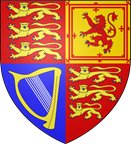







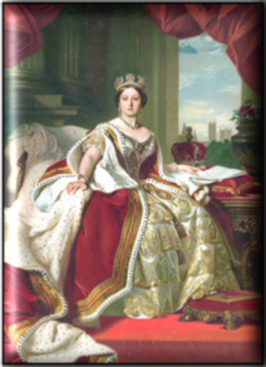 xxxxx
xxxxx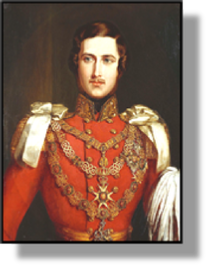
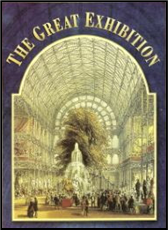 became
more and more involved in the daily affairs of state. She sought his
advice on many occasions, and was full of praise for his
achievements, particularly his outstanding contribution to the
success of the Great Exhibition of 1851, that “complete and
beautiful triumph”.
became
more and more involved in the daily affairs of state. She sought his
advice on many occasions, and was full of praise for his
achievements, particularly his outstanding contribution to the
success of the Great Exhibition of 1851, that “complete and
beautiful triumph”. 
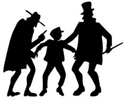 The
English writer Charles Dickens publishes
The
English writer Charles Dickens publishes  Two
German scientists, Matthias Schleiden and Theodor Schwann
formulate the cell theory, a concept developed further by the
German pathologist Rudolf Virchow in
Two
German scientists, Matthias Schleiden and Theodor Schwann
formulate the cell theory, a concept developed further by the
German pathologist Rudolf Virchow in  The
position of the planet Neptune is calculated by the English
astronomer
The
position of the planet Neptune is calculated by the English
astronomer 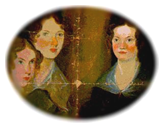
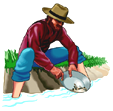
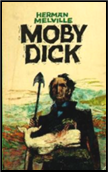 The
The

 The
The
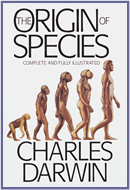 The
English naturalist
The
English naturalist 